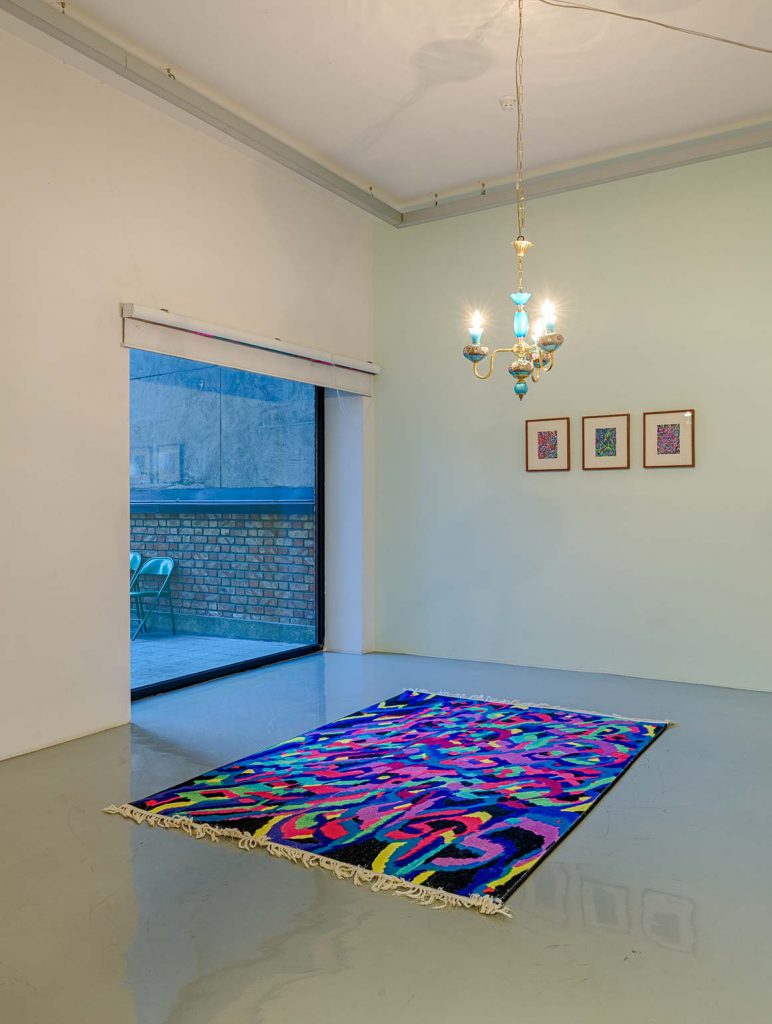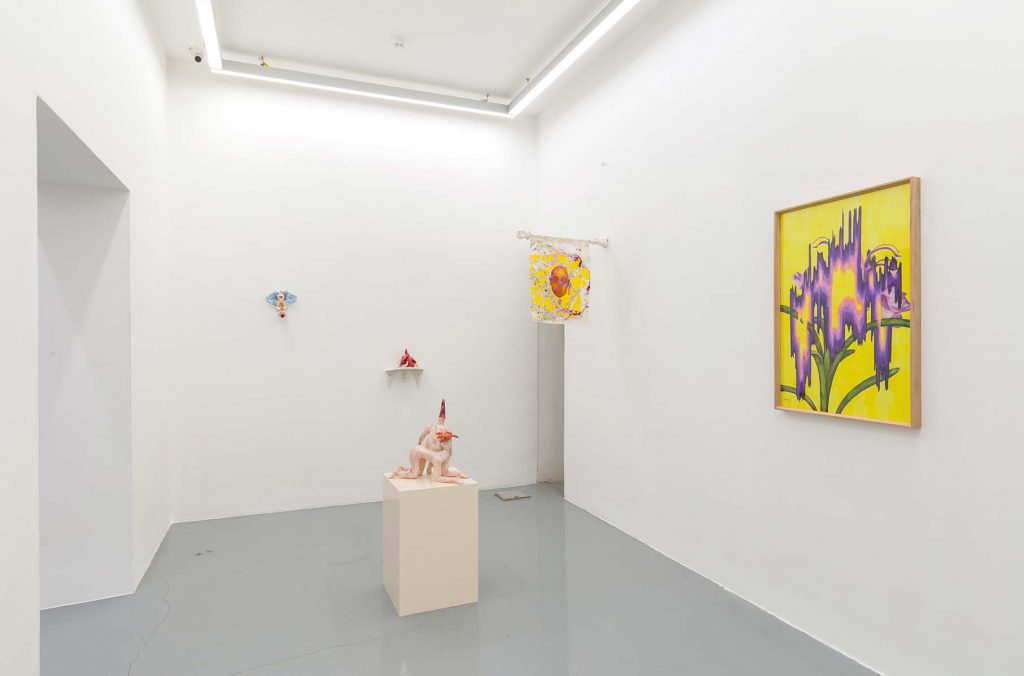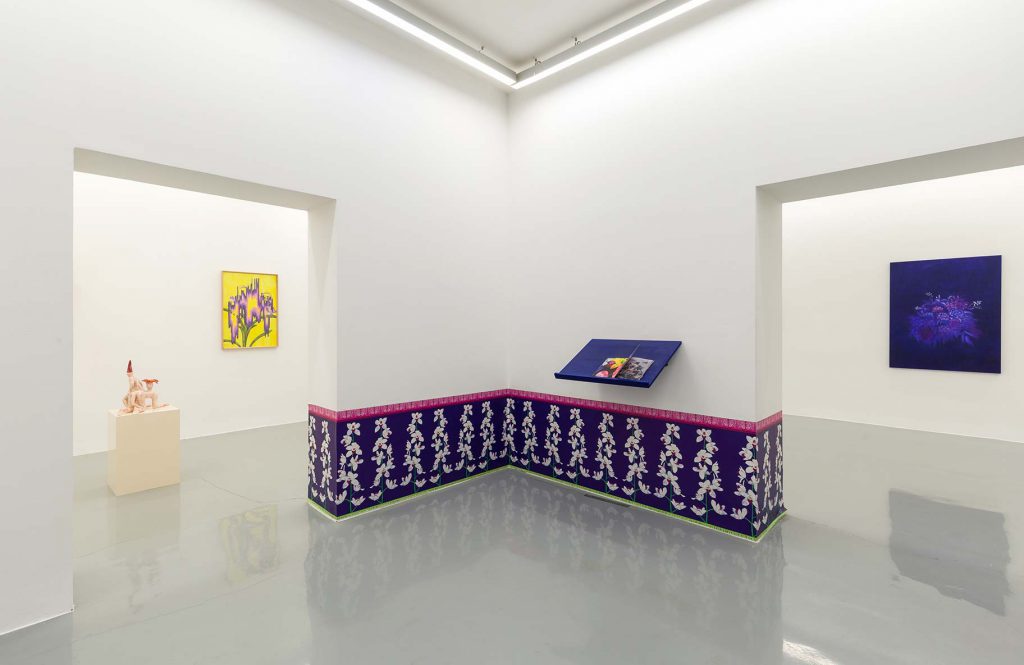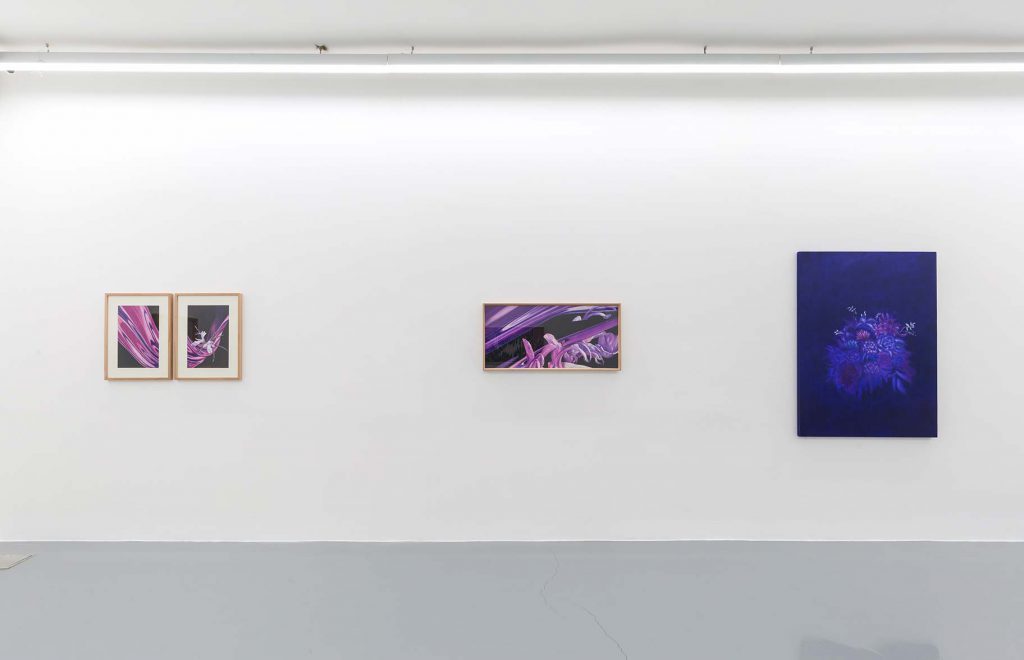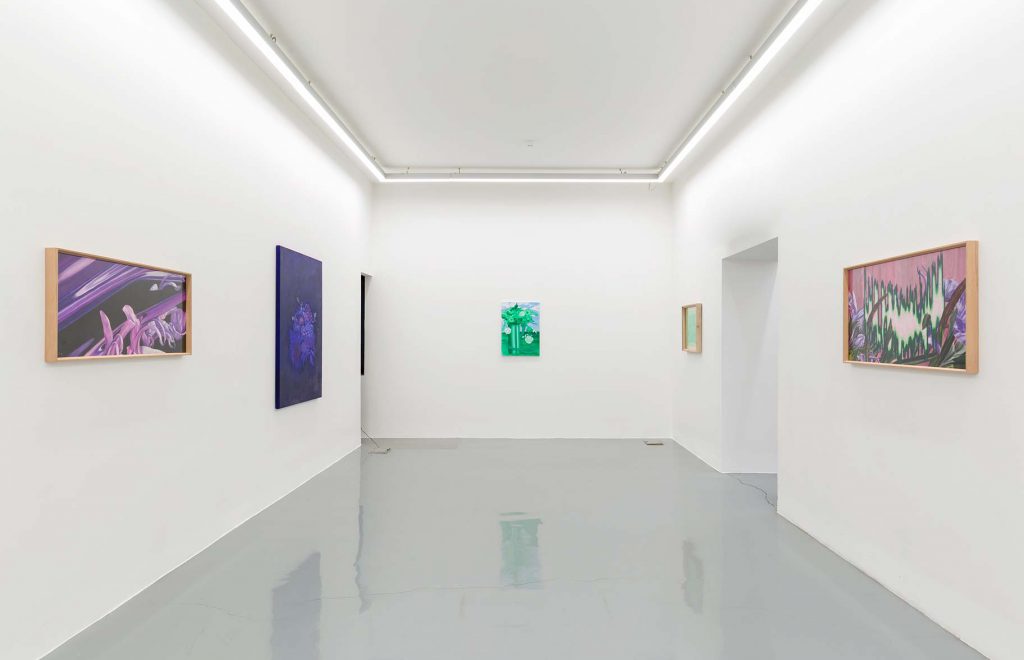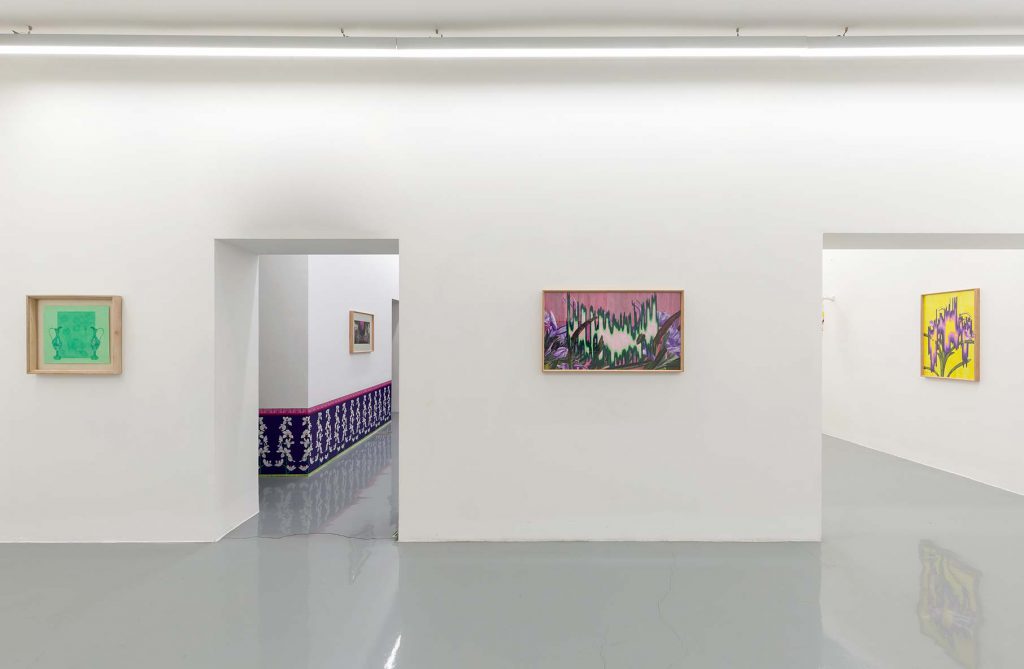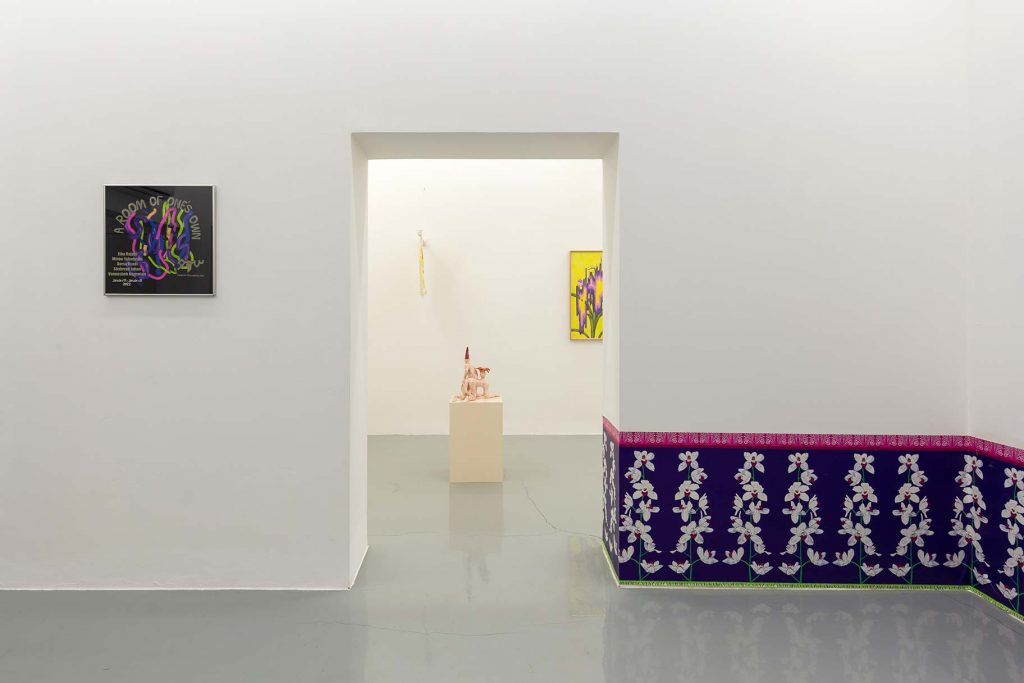A room of one’s own
Group Exhibition
January 14 – January 31, 2022
“A Room of One’s Own” is the result of a collaboration between five artists based in Tehran, Sarī, Tabriz, and Fayetteville (Arkansas). The thematic approach in this project has been based on the dominant modern classifications in art, specifically the categorization of art and culture into the two distinctive classes of ‘high’ (fine, or polite) and ‘low’ (popular, or decorative). In this spirit, the ‘flower’ was chosen as an element linking the work of the five artists. “A Room of One’s Own” includes a carpet, a wallpaper design, a book, a number of paintings, and ceramic sculptures.
Contrasted against high or fine art, decorative (low, or popular) arts are commonly attributed to works that prioritize usefulness, everyday value, and practicality; characteristics which have been highly prized in more Eastern art histories as integral features of all creative human production. Moreover, in many of the post-Renaissance modern classifications of art, the term has been frequently accredited to ‘female’ arts. In the course of the project’s research, ‘decorative’ approaches and elements, as well as those of ‘ornamentation’ have been treated as most valuable resources, and such approaches have been key in the coming together of the works and the artists, both conceptually and in the final layout of the exhibition. A carpet substitutes a painting, a wallpaper, or a flag, and mundane objects like decorative flowers or a silver chalice, are portrayed in paintings. In addition to their visual characteristics, what ties the pieces, themes, and perspectives together is a continuous effort in depicting a general image of personal experiences. The flower, as an element, is present in the works as a common icon, while carrying diverse connotations and denoting different conceptual outlooks.
The ceramic sculptures by Dorsa are the result of an imaginary but parallel historical timeline in which, instead of the agricultural revolution, flora continue to reign over humans. Flowers and people are engaged in a trans-morphosis; they transcend each other’s fundamental properties, and systems of gender and hegemony are transformed. The flag of “The Wizard of Oz” takes up the role of a magical symbol, denoting transmutation and change of perspective.
The paintings by Minoo are replete with decorative elements and focus on artificiality, ornamentation, and the material qualities of flowers. Symmetry and the presence of flowers along with domestic objects as background or foreground elements, further emphasize these fluid roles. In her compositions, flowers are depicted as part of a larger arrangement rather than a dominant protagonist; a dream-like arrangement of everyday elements that while insisting on their conventional identities, make atypical and uncanny allusions –a defamiliarized materiality and artificiality.
The works by Vanoosheh are based on her year-long study of the rosemary plant: how everyday and domesticized plants, which had remained ever so invisible to her, became the subject of her research and practice; an element whose visual characteristics and features she sought to portray. In this process, the pieces moved away from illustrations of the plant, and her depictions of the rosemary blended into wave-like color spectrums and gradients.
In Ziba’s recent work, she has combined her research on traditional Iranian decorative arts, like tilework and carpet weaving, with her interest in type, calligraphy, language, and written word. The pieces are the result of her developing a visual language in which words, and more specific lines of poetry (as part of the collective social memory), are morphed and transformed into illegible forms that almost resemble corrupted digital images. In “A Room of One’s Own”, one of her drawings has been replicated as a carpet: as so, an image that was originally formed from her mental image of a carpet, has been reproduced as a decorative object.
Shahrzad’s painting is based on a photograph: a flower bouquet sitting in the lobby of a hotel in her hometown of Zahedan. Flower arrangement, as decorative elements and ever-present silent witnesses, has been recurring subjects in her recent work. In this piece, while the artificial bouquet appears as eternal, it has in fact collapsed. The title of the piece, “Waking Up to Death Chants”, refers to a personal memory of hers in the same location.
The title, “A Room of One’s Own”, was taken from the title of the 1929 extended essay by Virginia Woolf, and refers to the necessity of financial independence for an author (writer or artist) and to have a room of one’s own to be able to remain creatively productive. In her essay, Woolf invents a fictional character she describes as Shakespeare’s sister and examines the role of financial and gender-related inequalities in limiting her creative development and output. The title also refers to the appropriation of exhibition space by the elements and objects accommodated within it, especially those aimed at its decoration.
Group Exhibition: Shahrzad Jahan, Minoo Yalsohrabi, Vanoosheh Kazemian, Ziba Rajabi, Dorsa Asadi
